Star Wars: Supremacy
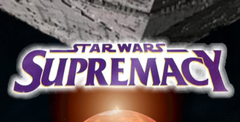
| a game by | Coolhand Interactive |
| Platform: | PC (1998) |
| Editor Rating: | 6.5/10, based on 1 review, 3 reviews are shown |
| User Rating: | 5.5/10 - 4 votes |
| Rate this game: | |
| See also: | Best RTS Games |
The Moderate Success Of Space conquest games like Stars! was an obvious opening for LucasArts. They'd already got a Star Wars 'universe', so all they had to do was throw in some strategy and a 3D tactical war-gaming engine, and before you could mutter "seduced by the Dark Side" they were beta-testing Star Wars Supremacy. In short, Star Wars Supremacy (known in the US as Star Wars Rebellion, for some reason) is a polished DirectXbased Windows 95 game with neat graphics, competent sound effects (including voice messages), some utterly predictable gameplay and a creaking interface.
You take on the role of either the Rebel Alliance or the Empire just after Luke's fluke shot rearranged the Deathstar into its constituent atoms. In control of the rebels, you start with all your characters (Leia, Luke, Chewie, Han Solo and a few others) on the planet Yavin, and a secret base placed randomly on one of the outer-rim worlds on which you can start building up your forces. If you start off as the Empire, Emperor Palpatine and Darth Vader are on Coruscant and you have several more worlds under your control, plus many more fleets and ground forces. The basic game starts with ten sectors (clusters of planets), each with ten systems, although you can opt for a longer game with either 15 or 20 sectors and one of three levels of difficulty. The standard victory conditions are to capture the opposing headquarters' system and the two main characters on each side.
Build 'em up, knock 'em down
The game revolves around mines and refineries that produce the raw materials, and maintenance points that enable you to build a variety of units, from army regiments for planetary defence and garrison duty, to various ships and fighters. Some 19 different ships, each with unique characteristics, are available to each side, plus five different regiments per side. These range from standard troops to the Empire's Dark Troopers and the Alliance's Wookie regiments. Not all units are available at the start because research also plays a hefty part in the game. Somewhat surprisingly perhaps, Supremacy is played in real time, although you can slow it down to a crawl if things start to get really hairy (insert own Wookie joke here). Units take time to move around, so you've got to plan things very carefully, on the one hand defending your bases and manufacturing planets, while on the other hand launching strikes of fighter squadrons and heavy capital ships on your opponent's facilities. You can instruct your agent droids (C3PO for the Alliance) to take over production and garrisoning if required, although they do tend to make purely defensive decisions. Fleets can bombard, blockade or invade other systems, but when opposing fleets come into contact, the game switches to a three-dimensional tactical battle screen. Here you give each ship or task force its orders, then sit back and watch what happens. This is a lot more exciting than it sounds, as you can zoom in on the action, watch the fireworks and interfere if you want to. As each side's ships have different weapons and features there's a fair bit of the old cerebral stuff required to succeed.
Two's company, three's a crowd
The game interface relies heavily on one screen, the GID (or Galactic Information Display), and you can overlay this with different information. For example, the size of each star can reflect its loyalty or the number of idle fleets in orbit. Most windows are modal and can be opened to display planets and systems, but this can get very cluttered, despite the fact that you can minimise them to a task bar. It's a pity that only 640x480 is supported. The interface isn't particularly easy to Fget to grips with and, although the flash graphics and digitised speech make it fun, in the heat of battle it's very easy to forget how to do something critical. That said, most units can be dragged and dropped, so rearranging fleets is a doddle. However, trying to build the units you want can be bloody frustrating at times.
The Empire wouldn't be the Empire without the Deathstar, but it uses a lot of resources and takes such a long time to build, so it's not always the Empire's best strategy. Often it's better to take advantage of the Empire's slightly better ships and regiments and hammer the Alliance's weak spots. Unfortunately, the 'multi-player' options are poor, and only two people can play at once, either via modem, serial link, network or over the Internet. More thought could certainly have gone into this side of things, with more than one player per side controlling their own characters and fleets.
There are other minor niggles too - no queue-building, for example, and random disasters that can frustrate your grand strategy. The way the Force is used isn't particularly exciting, and the one-dimensional plot and victory conditions get tiresome after a short while. Supremacy hasn't the depth of games like Stars! And while you don't need to be a Star Wars junkie to enjoy it, it does help. At the end of the day it's just an average - though solid - space strategy game, but not one with long-term appeal.
Kill off all your favourite Star Wars characters
One thing that sets Supremacy apart from other galactic strategy games is the power of the individual characters, of which there can be up to 30 per side. Some, like Leia, are strong on diplomacy skills, enabling them to influence support, while others can carry out various missions from sabotage, espionage and inciting revolt, to command of multiple units. Missions can be foiled or fail completely, leading characters being captured, wounded or even killed, but you can improve their chances by sending other units out as decoys - a nice touch - or even attempting rescue if the worst happens. Playing as the Empire, you can even assassinate other characters. Luke will, at some point when you least expect it, bugger off to Dagobah for Jedi training, and Han Solo sometimes gets captured by bounty hunters and whisked off to Jabba's palace. Force-aware characters grow in power as they use the Force, although the benefits seem only a device to push you along in the well-known linear plotline seen in the second and third films. For example, Luke will discover that Vader is his dad and eventually confront the Emperor and his sidekick in the 'final battle'.
Download Star Wars: Supremacy

System requirements:
- PC compatible
- Operating systems: Windows 10/Windows 8/Windows 7/2000/Vista/WinXP
Game Reviews
Not Content With Leading The Field in space combat sims, first-person shoot 'em ups and point-and-click adventures, LucasArts have finally made the decision to break into the strategy market and produce the game every Star Wars fan has been dying to play. A game that will for the very first time place them in the role of supreme strategic commander with all of the resources, planets and forces of the Galactic Empire or Rebel Alliance at their disposal.
Set just after Star Wars: A New Hope and before Empire, for the first time ever in a Star Wars game, players will be able to take control of actual characters from the films and send them on specific missions. They'll also be able to control massive fleets and generally act like they rule the universe (which is, after all, the point of the game).
Initial rumours suggested that Supremacy would be just like C&C, only set in the Star Wars universe. The rumourmongers couldn't have got it more wrong. It's nothing like C&C. Think more along the lines of Ascendancy and Master Of Orion 2 and you'd be much closer to the mark. "It would have been a pretty simple project to do," comments Product Manager Tom Byron, "but we wanted to create a game with more depth to it. Something that Star Wars fans could really get their teeth into. There are enough Command ft Conquer clones out there already - we wanted to do something a bit different. Something on a much bigger scale altogether."
Across the Galaxy
Supremacy is indeed a massive game, set in a Star Wars universe populated with up to 200 planets, each with their own particular balance of resources and political alliances, stretching from the icy planet Hoth to the Imperial Seat at Coruscant. Although the game is open-ended and there's no campaign in the normal sense, the player is given three set victory conditions which they must achieve, while the ultimate aim of the game is to amass enough power and resources to achieve these goals. To win, the Empire must capture Luke and Mon Mothma and destroy the Rebel base, whereas the Alliance have to capture Darth Vadar, the Emperor and take the Imperial capital at Coruscant. The fact that all three victory conditions must be satisfied simultaneously means that there'll no doubt be plenty of opportunity for counter-attacks and victory steals, a feature that will figure largely in two-player head-to-head mode.
When the game starts, the player will already have a limited number of worlds under their control and depending on which side is chosen, they'll have a number of quite different resources and personnel at their disposal. The Empire might start out with a much wider power base that outnumbers the Rebels' (just like in the films), but the Rebel headquarters are more elusive because they're mobile, and therefore harder to track down. Similarly, the Rebels might have less planets under their control, but they are generally more loyal, while those operating under the banner of the Empire will be less loyal and productive. As a result, there's plenty to think about before you even start. Do you opt for the might of the Imperial Forces, or rely on the stealth and limited resources of the Rebels? Whatever you decide, it's not going to be easy.
Supremacy is actually being developed out-of-house by a recently formed third-party developer called Cool Hand Interactive made up largely of ex-Three-Sixty Pacific people (the company behind the Harpoon series of naval strategy games). They've been working on Supremacy for almost two years now, and their strategy roots can be clearly seen throughout the game. Again, people expecting a massive combat-fest will be in for a bit of a surprise. Before players even think about engaging in any real-time face-offs, they will have to spend time exploring the galaxy, looking for resources, making new alliances, strengthening old ones and fortifying their fleet. Each planet has its own raw and refined materials that the player must use to build starships and troops and successfully managing these resources will be a crucial factor in how the game progresses, as will the loyalty of a planet and its people.
In an effort to keep it relatively simple and to cut down on the mundane management elements that plague so many games of this ilk, Cool Hand have toned down the resource management side of things by making all the planetary resources go into a central pool that the player can draw on. Consequently, the strategy is more focused on what you build, where you build it and how you use it rather than keeping a constant eye on endless stats.
Calling all units
It almost goes without saying that most Star Wars fans will be totally familiar with the combat units in the game. Players will be able to produce X-Wings, TIE Fighters, Storm Troopers, Star Destroyers, Blockade Runners, Calamari Cruisers - the Empire will even be able to build Death Stars (once they've got enough resources) - and then send their huge fleets to patrol the galaxy or protect a specific planet. When two fleets meet, a space squirmish fought within the Supremacy's dedicated tactical battle module will ensue. Although battles are essentially fought in real-time, the real combat is largely determined by attack patterns and tactics preset by the player. If things start to go a bit pear-shaped then the player can intervene and give new orders, using the scaleable 3D module to help them suss out a chink in their opponent's armour. However, success in combat will ultimately lie in planning and devising a flexible battle plan that will be able to cope with a variety of different situations, rather than dexterity with the mouse.
Cool Hand are keen to stress that Supremacy is very much character-driven in that players can call on various familiar faces throughout the game to aid them with special assignments. For the first time ever in a game, players will be able to call on the individual skills of Luke Skywalker, Han Solo, Darth Vadar, Lando, Chewy, Boba Fett, Mon Mothma et al to help them. Each character will have certain skills which will dramatically help increase the chances of a mission's success, but players must also consider that each character has a personality and motives of their own which must be accommodated. If Han is captured while on a mission, for example, Luke will demand to go and rescue him, just as he'll leave Rebel Command at some point in the game to go and train with Yoda on Dagobah. Lose your key personnel and you're in deep water, so whatever happens they must be protected at all costs.
Do-gooding droids
To help keep things moving the player will be assisted by two droids. C3PO and R2D2 will keep Rebel commanders up to date on what's happening around the galaxy, while the less famous IMP22 and SP7 will keep the Imperial players posted. The aim here is to make the game as easy as possible to control, while at the same time packing in as many Star Wars characters and personalities as possible. This, coupled with the fact that the game interface is being built around Windows 95 control protocols will mean that anyone who can find their way around the average desktop will be able to play Supremacy without too much trouble, which is good news for people who aren't that familiar with strategy games but are seriously into Star Wars.
At the moment, the team are working on the multi-player side of things and at the same time tweaking the Al. Modem play, LAN and direct connect serial mode play modes will be supported, but only for two players (the logic being that there are only two sides to play) and LucasArts still haven't ruled out the possibility of Internet play.
From what we've seen, Supremacy could well establish LucasArts as a major force in yet another genre. If they apply the same production values to Supremacy that they have to the other titles set within the Star Wars universe, the real-time strategy scene will no doubt be in awe come the Autumn when the game is scheduled for release.
You've Seen The Films, Read The Books, played the games and surrendered meekly to the ruthless marketing. You've probably even pulled yourself around the room to a freeze frame of Princess Leia. So what else remains to be milked from the flaccid breast of the Star Wars beast? Another game, evidently. But woah - easy tiger, steady as she goes - not just any old game, a real-time strategy game, with strategy, in real-time, and everything.
Yes, Star Wars Supremacy is indeed a bold journey into the hitherto uncharted territory of deep strategy in the Star Wars universe. The game is set in the time immediately after the conclusion of A New Hope, which, as you'll no doubt be aware, is the proper name of the first Star Wars film (or fourth if you want to be arsey about it). While Supremacy isn't really story driven, it's always nice to establish some kind of context, so feel free to adopt a deep, ridiculously melodramatic voice as you read the following precis: "The Rebel Alliance has dealt a decisive blow to the Galactic Empire by destroying the first Death Star. Only temporarily thwarted, the Empire regroups to continue its relentless pursuit to crush the Rebellion, while the Alliance has rallied galaxy-wide support for its noble cause. You hold the future in your hands. Subvert the Empire or crush the Alliance. Your choice. Your destiny."
Strength through joy
Assuming command of either the goodies (alas, without Bill Oddie) or the baddies, you are charged with the fairly hefty responsibility of taking over the galaxy. Depending on the length of game required, said galaxy can be limited to 100, 150 or 200 planets, which the player must then go about gaining control of through strategic deftness and tactical savvy. Failing that, you can simply go in there tooled up and start shouting. The key to the entire game is planetary loyalty. This can be swayed through many different methods, and often planets will remain neutral until some factors influence them. In an effort to solicit support for your side, a show of military force is often required. This may be very effective in the short term, but a resentful planet is more likely to shift loyalties. Espionage or diplomacy is therefore called for, which may take longer to establish loyalty, but will provide a more solid commitment.
Star Wars Supremacy takes the macro approach to strategy gaming. All the action takes place in space over planets, rather than on them. There are two major components of the game, strategic and tactical. The strategic side includes manufacturing, resource management, fleet deployment, mission assignments and exploration. Major decisions are made in the Command Centre, and players are updated on events by their agents - the perennially irritating C-3PO for the Rebel Alliance, and the clearly made-up IMP-22 for the Galactic Empire. Clicking on various star systems reveals a plethora of facts and opens up an array of options.
At first, the game appears extremely daunting, prompting constant groping for the manual. Do not be mistaken, do not be misled, Star Wars Supremacy is no fly-by-night pick-up-and-play affair. A good deal of commitment is required before any kind of reward is to be had, but with patience and concentration it gradually starts to come together. While the game does run in real-time, it is essential to dispel any similarity to the likes of WarCraft 2 or Command Et Conquer. The gameplay is far more like a Masters Of Orion in real-time.
Shut winders, get weshing in
The interface is largely a massive set of windows which pop out of other windows. The most basic window is that of the star map, which denotes the layout of the Star Wars galaxy. Space is divided into sectors of ten planets apiece. The larger the game the player decides to start with, the more rim planets there are (hurgh hurgh hurgh - he said 'rim'). The ten core sectors are always the same, and hence the resources are always known for those planets. By double-clicking on any sector, a window will open up and show the layout of each planet. Each planet will have two meters, and various icons surrounding it denoting fleets, facilities, characters and more. By double-clicking on any of the icons around a planet it is possible to organize and deploy fleets, manufacture new units, set up new facilities, and other actions. Cappiche?
Scrap, scrap, scrap
When two opposing fleets meet over the same planet, the tactical component automatically kicks in. This is a separate game element where players can join ships that have been deployed into taskforces or fighter squadrons, and assign orders or targets. All of this takes place in a real-time 3D space-combat engine that's moving as soon as the conflict is joined. The player can arrange fleets in certain formations, give orders and watch the ensuing skirmish from a choice of camera angles. If it becomes evident that you're taking an absolute hiding, there is always the chance to run away. Depending on players' skill, tactical sessions can last up to 20 minutes each, but if you don't fancy your chances, it can be placed on auto-run, enabling you to concentrate on the strategic side of things.
Who you're fighting for - Alliance or Empire - has a great bearing on the outcome of a battle. There's a big difference between a Star Destroyer and a Mon Calimari Cruiser. For the game to work, LucasArts will have to ensure that the two sides are fairly evenly matched. In the films, Star Destroyers are big, heavy, armed to the teeth and very dangerous. The Rebels should therefore have speed, agility and guile on their side, if there's any justice in the cosmos.
Character assassination
Characters are also very important. A significant part of gameplay consists of missions that must be assigned to achieve specific goals. You might have to send characters on diplomatic trips to sway a system's loyalty, get them to sabotage planetary defences, or rescue another character who has been captured. By assigning a character with suitable attributes, the chances of that mission succeeding are greatly enhanced. For example, if a player seeks to convince a planet to be loyal to the Rebellion, and wishes to take a more diplomatic tack to achieve that loyalty, the player might assign Mon Mothma, card-carrying politico and leader of the Alliance. At the same time, precisely because she is a diplomat and thus not militarily powerful, she's vulnerable to capture, which would then necessitate a rescue mission.
Big log
LucasArts have pretty much taken carte blanche with the characters, which could upset rabid purists. For instance, Lando may not begin the game on Bespin, which could cause some fretfulness. Certain characters, such as Luke and Darth Vader, have the use of the Force, which they can use to increase their other abilities such as combat, sabotage and diplomacy. When the game begins, Luke is not yet a Jedi and at some point he leaves the game to go log balancing in a swamp with that ridiculous puppet. While he's gone, the player doesn't have the use of him.
Furthermore, there are relationships between characters. When Vader and Luke occupy the same sector, they will be able to sense one another. Often the two will be drawn towards one another, leading to a conflict that can result in one or the other being captured, depending upon their abilities at that point in the game. Should Luke get captured, Han Solo and Lando may want to make a rescue attempt, even if the player doesn't. Such a scenario can end with the other characters getting captured, and so on it goes.
Winners dinners
Victory conditions are clearly specified. For an Alliance win, the player must capture Darth Vader, Emperor Palpatine and seize the Imperial Seat on Coruscant. To win for the Empire, the player must capture Luke Skywalker, Mon Mothma and destroy the Rebel headquarters, which is randomly placed at the beginning of each game and has the advantage of being mobile. Neither of these are easy tasks, and hours of play are I required before you even get a sniff. There are varying difficulty levels for novice and veteran players, and it's possible to go head-to-head across a LAN or a pair of modems, providing some hot two-player action.Internet possibilities are also being investigated.
So it looks like LucasArts have got all to play for. Hopefully they'll get it right with Star Wars Supremacy and not have to depend solely on the kind of people who'd gladly buy everything with Star Wars written on it.

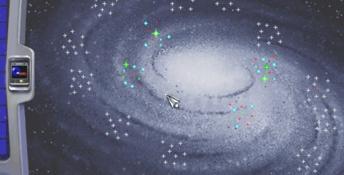
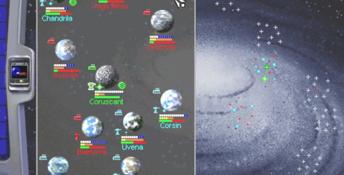
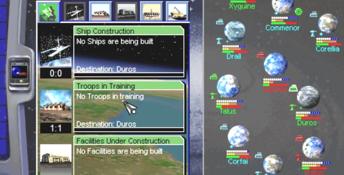
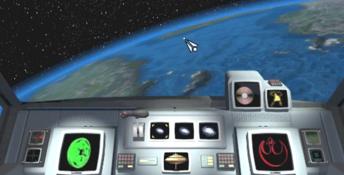

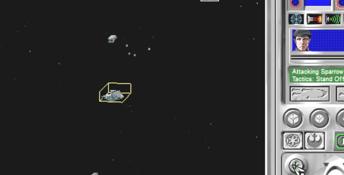

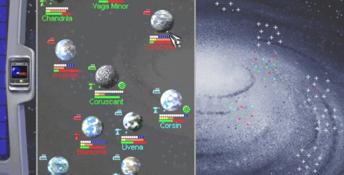

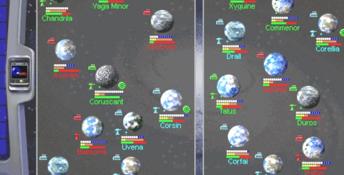
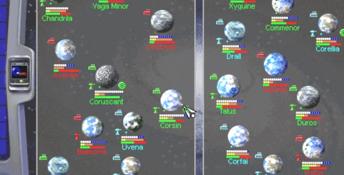
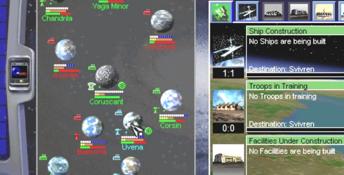
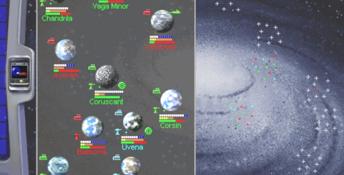
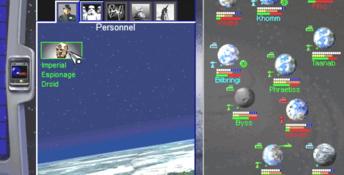
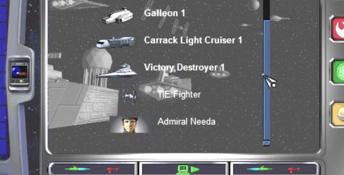

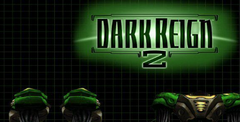 Dark Reign 2
Dark Reign 2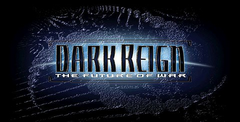 Dark Reign: The Future of War
Dark Reign: The Future of War
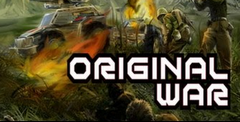 Original War
Original War
 Praetorians
Praetorians
 Sacrifice
Sacrifice
 Stronghold
Stronghold Sudden Strike
Sudden Strike
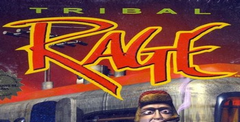 Tribal Rage
Tribal Rage
 Лорды войны
Лорды войны